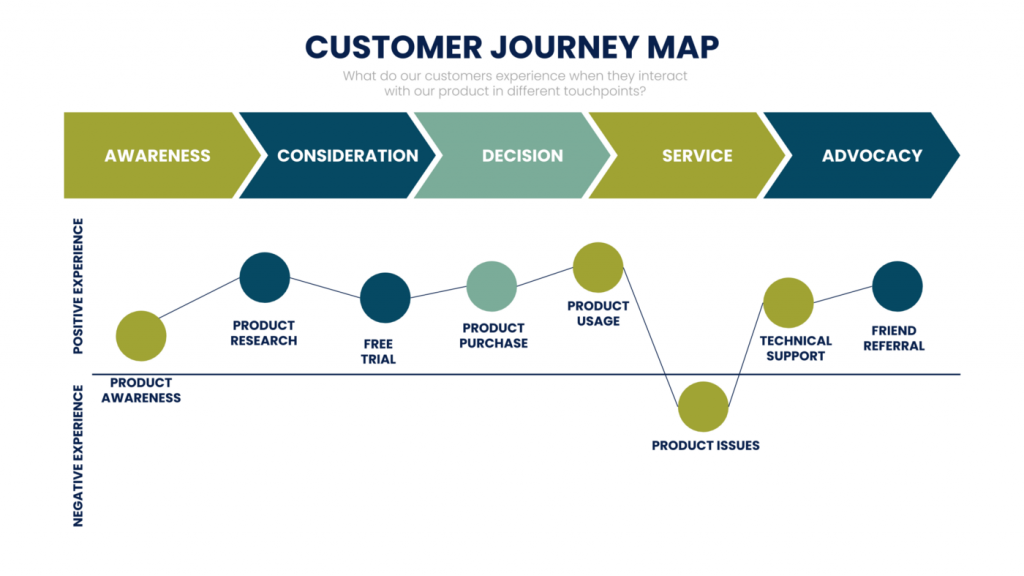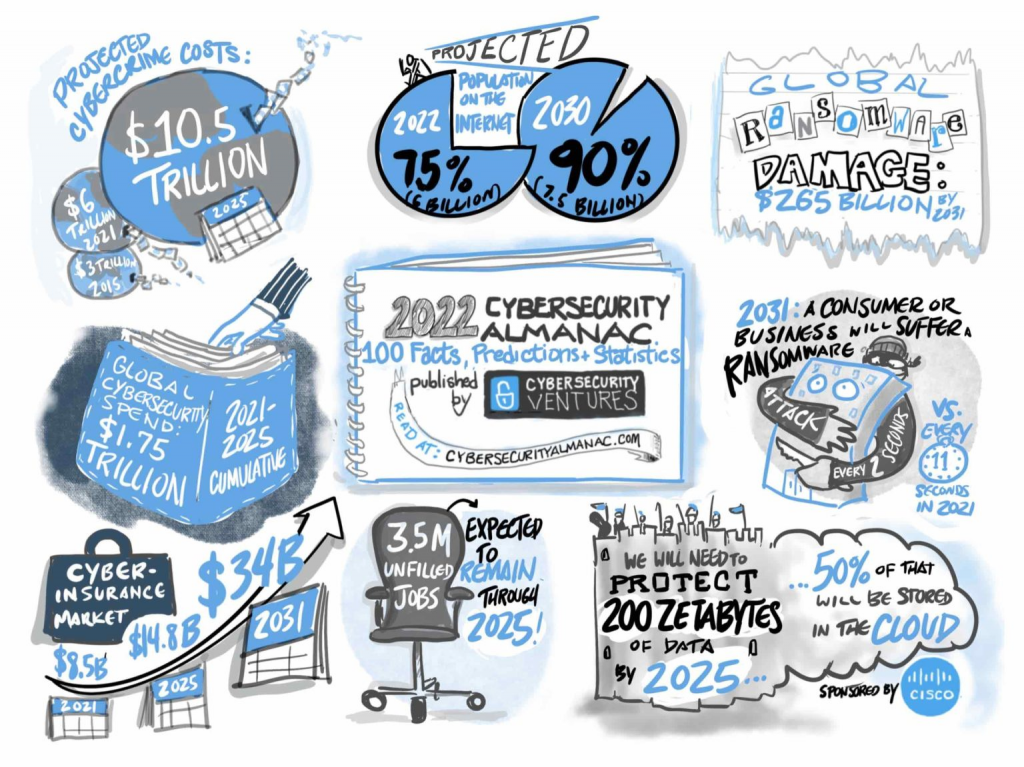The customer journey is a vital piece of the business puzzle. It’s the path your customers walk from awareness to conversion. That’s why you have to know every inch of that journey and optimize it to ensure that it’s smooth and free of potentially perilous holes.
For example, how do people find you? Unless you dissect the customer journey, you have no idea. For example, a company like Freepik might look into its customer journey to find out where its converting customers are coming from. Do they just Google “free vector graphics” or funnel through social media? By understanding this, the company will have a clear idea of where its marketing outreach should occur. Should they focus more on SEO or targeted Facebook Ads? By understanding the customer journey, they can make this critical decision.
But how can you come to understand this journey better and maximize it to its fullest potential? The answer lies in data science. Through data science, you can gather information backed by numbers and make informed decisions that will benefit your customers and, ultimately, your company.
But what is data science? And how can you use it to improve your customer journey? That’s what we’re going to be exploring in this article.
What is Data Science?
Data science is the process of using processes, algorithms, and scientific methods to pull insights from the customer data you’ve gathered. All businesses gather data now, and it is an important part of the modern corporate world.
But once you have this big pile of data, what do you do with it? By conducting data science on all of your gathered information, you’ll be granted an unprecedented look into the lives, habits, behaviors, and preferences of your audience.
Data science can give you valuable insights on how to improve or expand your product offering as well. For example, a bank may use its data to recognize that a common customer profile contains parents or young families. The team at the bank can then determine that customers will likely be looking into banking opportunities for their children. The bank would then use that information to develop a line of kids’ debit cards. This not only boosts the loyalty of existing customers but also introduces a new generation to its product.
Data science is being heavily used throughout the financial world. MOS is a bank that has relied heavily on data science, using it to identify potential pain points for users. It leveraged this pain point data to create student bank accounts that speak to the needs of its primary audience.
How can Data Science Improve the Customer Journey?
Organize Important Data
You’re going to gather a lot of data from your customers. It’s inevitable and necessary if you want to improve the customer experience and get ahead of your major competitors. However, that data is going to compile itself into a huge mountain that needs to be sorted if it’s going to be of any use.
What’s more, the data has been compiled by various departments within your company. Without a seamless data science tool connecting all of those disparate departments, you’ll have data silos form, where the information you collect can’t serve the company as a whole.
Data science algorithms can organize your customer data, making it accessible to all departments under your control. You can then use that data to identify trends, patch security vulnerabilities, create an optimized privacy policy, correct errors before they negatively impact you, and more.
Identify Trends
Trends are important in the business world. You need to know where your customers’ habits and preferences are going and where the market and industry as a whole are headed.
Data science can give you an unprecedented look into what trends currently impact your business. Then, by leaning into them, you can improve the customer journey by giving people exactly what they’re looking for.
Stack is a company that focuses heavily on data science to understand trends in how people browse in order to develop its Spatial Browser. Understanding what users need and want before fully committing to a new browser or tool is a fundamental need in Stack’s industry. Without that data gathered through data science, user acquisition would be impossible.
Of course, to determine the best course of action for your company, you’ll still need to access the kind of data that is generally locked away, either due to privacy regulations or a lack of explicit customer consent. Thankfully, synthetic data platforms can generate synthetic copies of CRM databases, which can provide you with insights from real datasets without violating any privacy regulations.
Find and Fix Security Issues
Cybercrime is a huge issue plaguing the online business world. Businesses today collect a lot of data, and that data is valuable to malicious actors. Sometimes they aim to steal passwords or personal information. Other times, they go right for the financial information of your customers.
Companies need to enhance the customer journey while taking the time to think about how to create a secure experience that is still engaging. Malicious attacks now aim to exploit vulnerabilities associated with identity and access management controls. Customers, meanwhile, expect an easier digital experience, including fast authentication and log-in, as well as seamless web and mobile interactivity.
Cybercrime has been estimated to cost the world $10.5 trillion by 2025. What’s more, it takes a security team an average of 287 days to identify and contain a data breach. The cost of one of those breaches, in terms of stolen information and reputation damage, is a whopping $4.24 million. In other words, nothing can derail a customer journey more than a data breach.
Thankfully, data science can help you protect your customer journey from these criminal acts. Machine learning algorithms can be loaded with information about these breaches and how they’re typically done. This will help you find patterns that can detect the presence of a breach before cybercriminals gain access to your systems. These tools can even predict attacks before they happen.
Avoid Accidentally Violating Data Laws
A regular part of the modern customer journey is granting permissions for data gathering. However, users have become more skeptical of companies asking for their data. As such, they’ve become more protective over it than ever before.
That’s why data regulations and laws like the GDPR and ePrivacy Directive (more commonly known as EU Cookie Law) have their own firm guidelines on data and cookie use. Data science can show you trends in how your customers feel about cookie consent and data retention. You can then design your data and cookie policies around the wants and needs of the people you’re trying to appeal to.
Correct Errors Before They Happen
Mistakes can be costly for a business. This includes shipping the wrong items, accounting errors, calculating sales tax incorrectly, or just making silly mistakes when marketing your products or services.
Mistakes are prime targets for screenshotting and sharing. When one of your company’s mistakes goes viral, you become known for it.
Your system can recognize human errors and flag them for action, thanks to machine learning. This can be something as simple as an advertising campaign that hasn’t been targeted properly or some major issue with your shipping provider that’ll cause delivery delays.
Personalize the Shopping Experience
People want personalization in their online shopping. It’s something that customers have come to expect from the online platforms they frequent. When you buy an item, the system learns your needs and preferences and makes recommendations for future purchases.
You can use data science to create product associations, so when someone purchases a flower pot, you can recommend a garden planter and a plastic saucer, like the example above from Amazon. You’re using data to create connections between products that are likely to be purchased together. This can be seen by your customer as helpful and also help you turn a small sale into a much larger one.
You can also learn from your customers’ past purchases and make recommendations for them based on their purchase history. For instance, if data science shows that a certain customer enjoys a book series by a particular author, it could recommend books in a similar genre to them. Customers see this as a personalized shopping experience, and that goes a long way.
Conclusion
Data without data science is useless. By utilizing a powerful data science tool, you can maximize your customer journey and provide a seamless experience that will lead to an influx of new and returning buyers.




